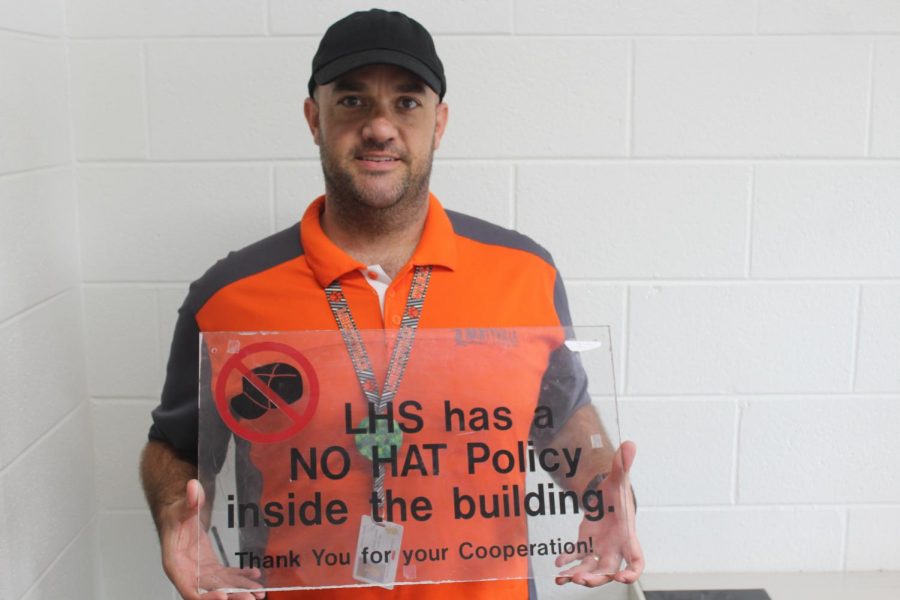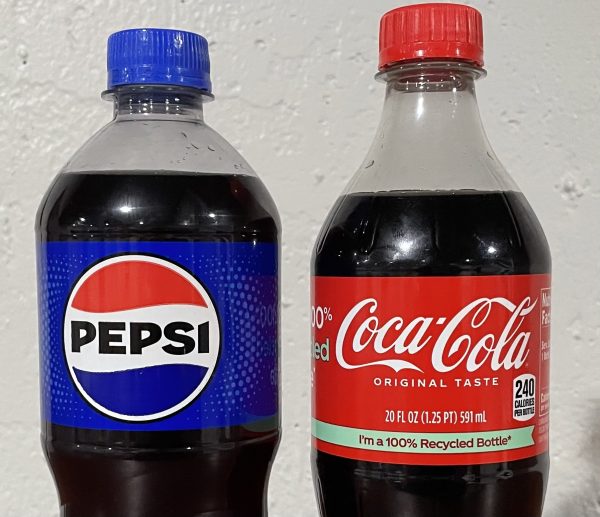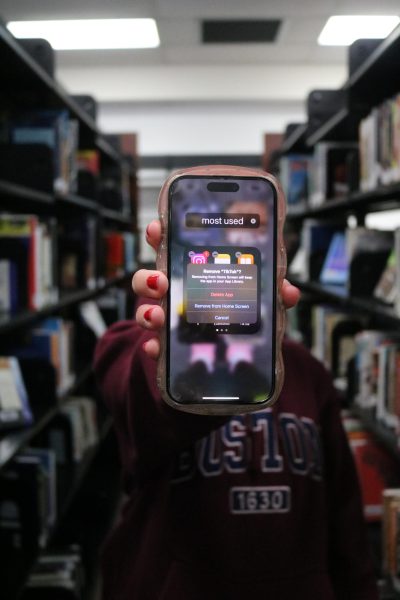LHS hat policy removed for trial period
With the new hat policy in place at Libertyville High School, students are now allowed to wear hats throughout the building and during classes. Even one of the security guards, Mr. Tim Akers, is happy about the new change in policy.
While the LHS hat policy originated around 1998 for security and social reasons, administrators now believe there is little harm in hat wearing anymore, leading them to revoke the hat policy with the possibility of re-instigation in the future.
Last year, and at the start of this year, Principal Dr. Tom Koulentes has been communicating with students regularly, and students have often brought up the hat policy and questioned its relevance today. After much discussion with the security team, it was decided students may wear hats in school, but within classrooms, it is up to the discretion of each individual teacher.
“If a teacher has a no-hat policy inside the classroom, the students have to adhere to it,” said security supervisor Mr. Robert Uliks.
He added that the security team had issues enforcing the previous policy since some teachers would call out students for wearing hats and others were more lenient.
Many students felt the hat policy no longer had a concrete purpose in the school and that not all hats should to be banned.
“I understand teachers saying that they don’t want, like, a dad hat or a baseball hat, because you could do stuff under the brim, but what harm is me wearing a beanie doing?” stated junior Scott Sanderson, an avid hat wearer who advocated for removal of the hat policy.
Mr. Uliks agreed that hats that do not obscure a student’s face (and therefore his/her identity) are not security risks.
The hat policy was initially put in place for multiple reasons, including the distraction they caused in class. Some students were playing with their hats instead of focusing on schoolwork, according to Mr. Uliks.
Also, when the hat policy was instituted, wearing a hat a certain way or of a certain color could be associated with gangs. According to Mr. Uliks, “[the hat policy] was one of the ways we addressed [gang culture] to make sure it never got here.”
But the main reason for the hat policy was for security, so people’s faces weren’t hidden depending on what type of hat they wore, Mr. Uliks said. Especially when it came to adults, it was imperative the security team could identify them. Now, however, the school has listened to what students have to say about the hat policy.
“We looked at the hat policy and we said we were willing to see how [it would] work on a trial basis,” Mr. Uliks said.
While the hat policy is no longer in place, Mr. Uliks explained that this is a pilot period, to see if the removal of the hat policy causes issues. For example, if a student were to wear a hat with a political slogan or an inappropriate message that distracted from class, staff would put a stop to it.
“If it ever becomes a disruption in any way, we will put an end to the hat wearing,” he said. “It’s just to see how it goes.”
Some teachers still make an effort to reduce the possible disruption of hats in class since the policy was removed. Sanderson mentioned, “If I’m wearing a baseball hat, I have to put it backwards so [the teacher] can see my eyes, like through the hat instead of having the brim there, and make sure there’s no writing on there or that I’m trying to fall asleep.”
Sanderson expressed that the new policy could create discrepancies that can be confusing to students: “[The school] should have a more defined set of rules of what can and cannot be on your head.”
While Vernon Hills High School is in District 128 along with Libertyville, the hat policy has not changed there. According to Mr. Uliks, students at VHHS may wear hats before or after school in the building but not during school hours.




![Mr. Abullh Ali, manager/assistant, helps open Queen Yemeni Coffee in downtown Libertyville at 606 North Milwaukee Ave. With the help of employees such as manager and LHS senior Yousef Taha, they are able to bring the Yemeni and Ethiopian culture to Libertyville by using their Queen spices, cinnamon and cardamom in their drinks such as Adani Chai, which is inspired by Sheda, the Queen of Yemen and Ethiopia. “The history of our coffee [is] a long history and we believe that Yemen and Ethiopia started the coffee and we are bringing something unique to the community,” Mr. Ali said.](https://www.lhsdoi.com/wp-content/uploads/2025/04/Photo-1-600x400.jpg)



